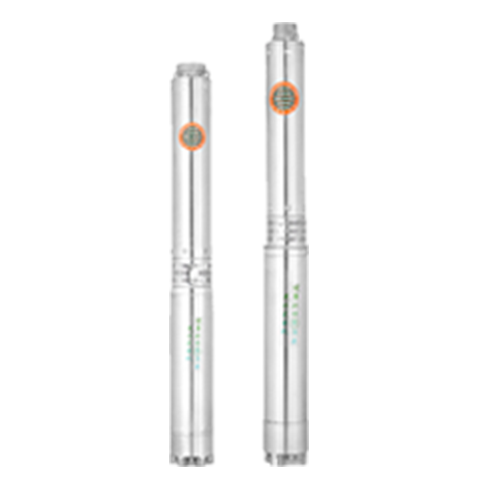Dec . 13, 2024 22:11 Back to list
1 hp submersible pump wire size
Understanding Wire Size for 1% HP Submersible Pumps
When it comes to submersible pumps, particularly those with a motor rating of 1 horsepower (hp), selecting the appropriate wire size is critical for ensuring optimal performance and safety. In this article, we'll explore the significance of wire size, the factors affecting it, and guidelines to help you make the right choice.
Importance of Wire Size
Using the correct wire size for a 1 hp submersible pump is essential for several reasons. Firstly, the wire size impacts the electrical resistance. If the wire is too thin, it can lead to excessive resistance, resulting in voltage drop. A significant voltage drop means that the pump will not receive sufficient voltage to operate efficiently, leading to reduced performance, overheating, and even potential motor failure over time.
Secondly, the gauge of the wire influences the power loss due to heat generation. When an electric current flows through a wire, resistance creates heat. Using an undersized wire can cause overheating, potentially posing a fire hazard and reducing the insulation lifespan of the wire. This degradation can lead to shorts or other electrical failures, which can be costly and dangerous.
Factors Affecting Wire Size
1. Length of the Run The distance between the power source and your submersible pump significantly impacts wire size. Longer runs require thicker wires to minimize voltage drop. A common rule of thumb is to limit voltage drop to no more than 3% for optimal pump performance.
2. Amperage The current that your submersible pump draws is crucial in determining the wire size. A standard 1 hp submersible pump typically draws around 10-13 amps under full load. The higher the amperage, the thicker the wire needs to be to safely carry the current.
1 hp submersible pump wire size

3. Type of Wire Different wire types have different ampacity ratings. For submersible pumps, mostly copper or aluminum wires are used. Copper has a higher conductivity than aluminum, allowing it to carry more current without excessive heat generation. Therefore, remember that when comparing wire sizes between copper and aluminum, you would generally need a larger aluminum wire than copper to accommodate the same current.
4. Environmental Conditions The environment where the pump is installed can also impact wire size. If the wire is exposed to extreme temperatures or chemicals, it may require a thicker gauge or specific insulation to ensure safety and durability.
Wire Size Recommendations
For a 1 hp submersible pump, the following wire size recommendations can be considered
- Copper Wire Generally, for copper wire at a standard distance of up to 100 feet, a 14-gauge wire is often sufficient. However, if the distance increases, or if your installation has particular voltage drop concerns, moving up to a 12-gauge wire can help mitigate these issues.
- Aluminum Wire If opting for aluminum wire, a 12-gauge wire is typically a good starting point for a similar distance. Due to the lower conductivity of aluminum, a thicker gauge is necessary to carry the same current safely.
Conclusion
Choosing the appropriate wire size for a 1 hp submersible pump is critical for its efficiency and safety. By taking into account factors such as the length of the run, the pump's amperage, the type of wire, and environmental conditions, one can make informed decisions. Always prioritize safety and confirm with local electrical codes or a professional electrician to ensure that your installation complies with all relevant standards. This not only maximizes the performance of your pump but also safeguards against potential hazards, providing peace of mind and reliability in your aquatic applications.
-
Submersible Water Pump: The Efficient 'Power Pioneer' of the Underwater World
NewsJul.01,2025
-
Submersible Pond Pump: The Hidden Guardian of Water Landscape Ecology
NewsJul.01,2025
-
Stainless Well Pump: A Reliable and Durable Pumping Main Force
NewsJul.01,2025
-
Stainless Steel Submersible Pump: An Efficient and Versatile Tool for Underwater Operations
NewsJul.01,2025
-
Deep Well Submersible Pump: An Efficient 'Sucker' of Groundwater Sources
NewsJul.01,2025
-
Deep Water Well Pump: An Efficient 'Sucker' of Groundwater Sources
NewsJul.01,2025
-
 Submersible Water Pump: The Efficient 'Power Pioneer' of the Underwater WorldIn the field of hydraulic equipment, the Submersible Water Pump has become the core equipment for underwater operations and water resource transportation due to its unique design and excellent performance.Detail
Submersible Water Pump: The Efficient 'Power Pioneer' of the Underwater WorldIn the field of hydraulic equipment, the Submersible Water Pump has become the core equipment for underwater operations and water resource transportation due to its unique design and excellent performance.Detail -
 Submersible Pond Pump: The Hidden Guardian of Water Landscape EcologyIn courtyard landscapes, ecological ponds, and even small-scale water conservancy projects, there is a silent yet indispensable equipment - the Submersible Pond Pump.Detail
Submersible Pond Pump: The Hidden Guardian of Water Landscape EcologyIn courtyard landscapes, ecological ponds, and even small-scale water conservancy projects, there is a silent yet indispensable equipment - the Submersible Pond Pump.Detail -
 Stainless Well Pump: A Reliable and Durable Pumping Main ForceIn the field of water resource transportation, Stainless Well Pump has become the core equipment for various pumping scenarios with its excellent performance and reliable quality.Detail
Stainless Well Pump: A Reliable and Durable Pumping Main ForceIn the field of water resource transportation, Stainless Well Pump has become the core equipment for various pumping scenarios with its excellent performance and reliable quality.Detail
